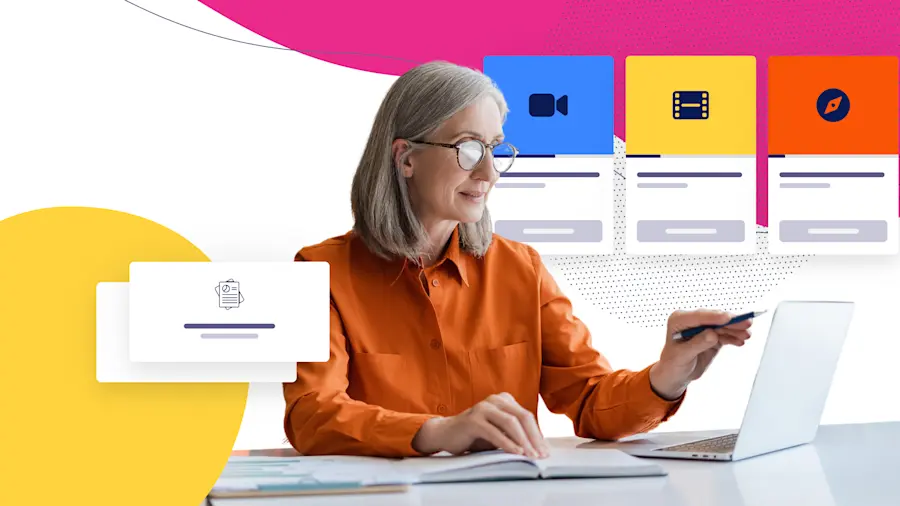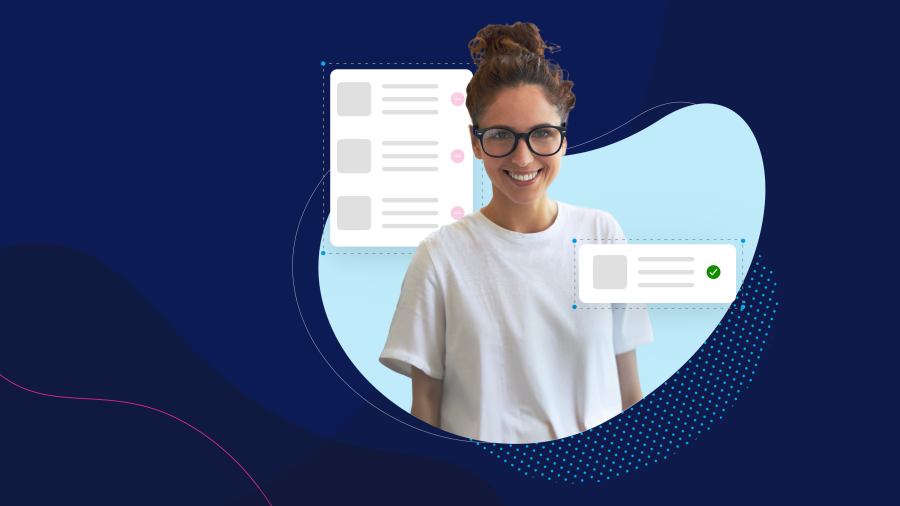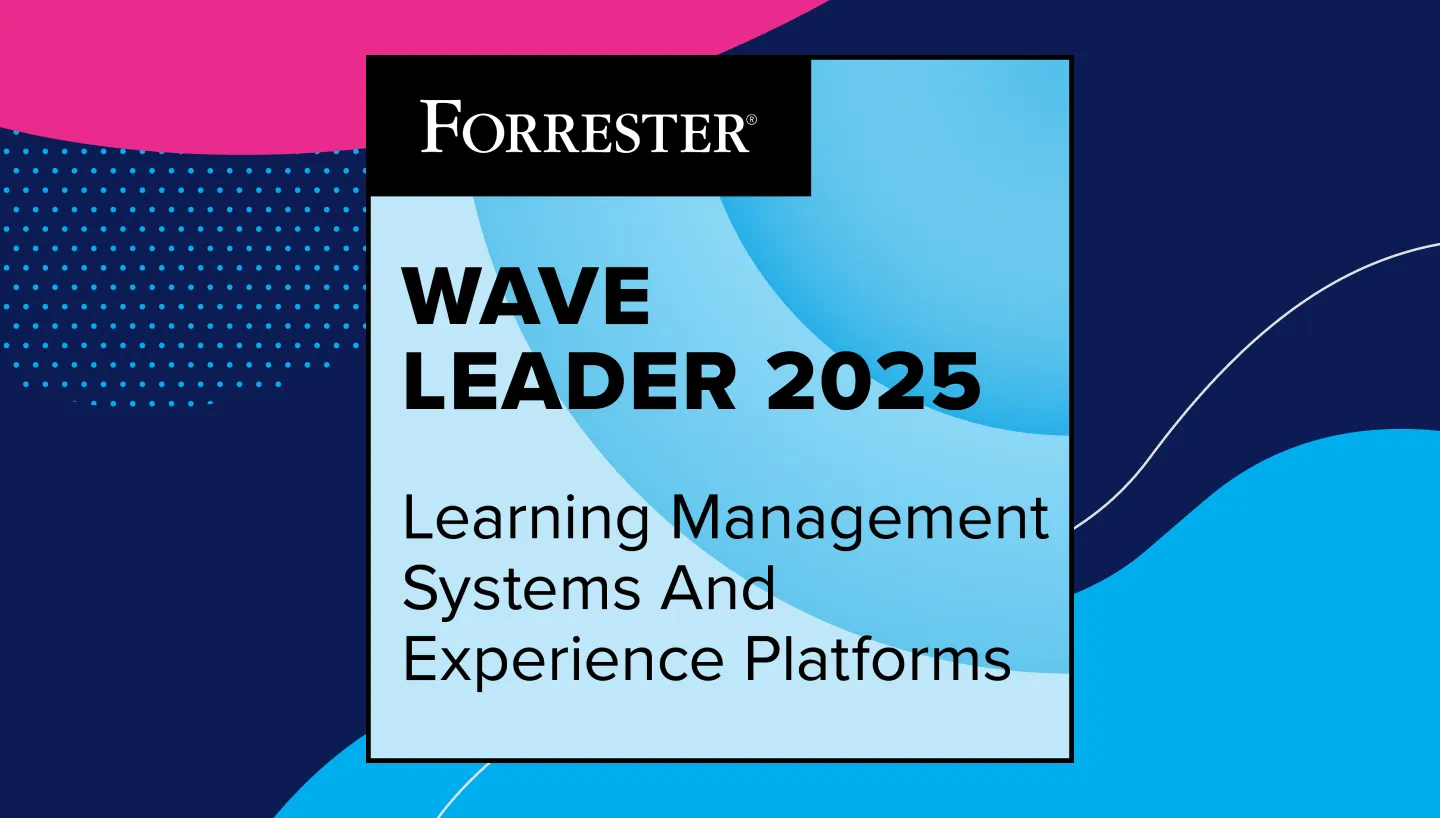Skills drive today’s workforce, and they’re shifting fast. Most organizations know they need to upskill their people to keep up. But knowing isn’t the same as doing.
Absorb recently surveyed over 1,300 learning professionals, and the results tell a story that’s more about potential than progress. While upskilling has overtaken compliance as the top priority for learning and development teams, execution is lagging.
Many organizations still struggle to build consistent, scalable programs that map directly to business needs.
So what’s getting in the way? Here are some of our findings:
HR and L&D leaders face challenges in translating the vision to the action
According to our survey, the top two challenges facing L&D teams are:
- Limited people or budget resources (35.4%)
- Finding the right technology or tools (33.5%)
In other words, most teams aren’t struggling with why upskilling matters. They’re stuck on the how. Budget cuts, small teams, and a lack of scalable systems make it difficult to operationalize even the best intentions. And without visibility into actual skill gaps, many programs default to general content that doesn’t drive measurable outcomes.

People-based learning is underutilized and undervalued
Upskilling isn’t just about content. It’s also about connection.
Coaching, mentorships, apprenticeships, and peer-to-peer learning are some of the most effective ways to build real, role-specific skills. But most organizations aren’t using them. In fact, 43.6% of respondents said they’re not using any people-focused learning, and have no plans to. Just 12.8% use apprenticeships. Coaching and mentorships? Even lower. It’s a missed opportunity. When done right, people-focused learning adds depth, context, and accountability that content alone can’t deliver.
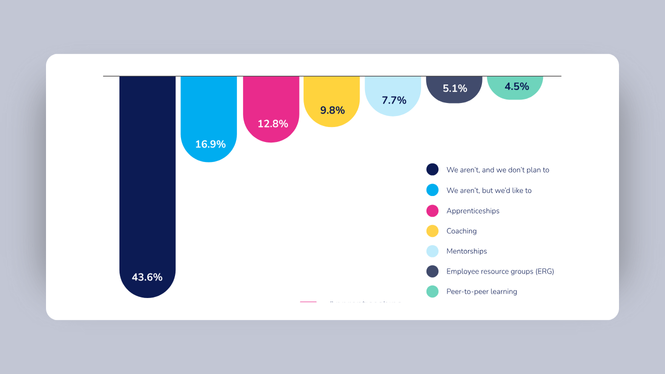
To drive long-term impact, organizations should integrate people-based learning programs into their broader strategies—combining coaching, mentoring, and experiential learning with tech-powered solutions.
Outcomes exist, but measurement lags
When asked where they expect upskilling to make the biggest difference in the next two years, learning professionals shared a widespread view.
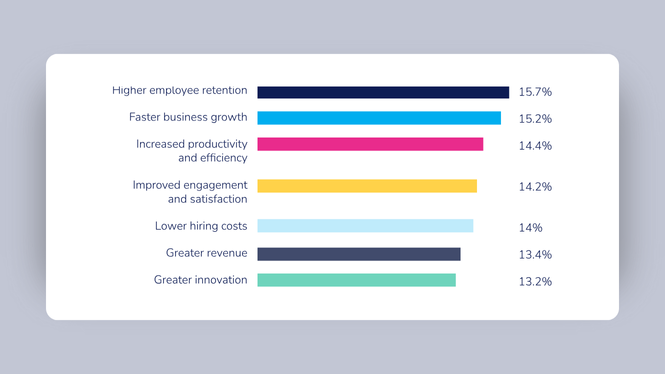
Forward-thinking organizations are measuring upskilling outcomes more effectively, moving beyond completions to track impact on performance, retention, and business goals.
Why traditional upskilling isn’t cutting it
It’s not that companies aren’t trying to upskill their people. It’s that most approaches weren’t built for today’s pace. From unclear learning paths to disconnected systems, L&D leaders face persistent upskilling challenges that limit their ability to close skills gaps at scale. Let’s take a closer look at where traditional upskilling efforts fall short and why they need an upgrade.
The opportunities are inconsistent
When skills aren't clearly mapped to current and future roles, learners are left unsure of what to focus on. Training is hard to find and often disconnected from development goals. The result? Sporadic skill-building, limited progress, and low visibility into what’s really working.
The delivery is too rigid
Scheduled sessions. Long modules. One-size-fits-all programs. These aren’t just outdated, they’re often incompatible with how people work now. Today’s learners need flexible, self-paced options that fit into their flow of work. Learning programs need to be optimized for adult learning, support multiple modalities, and support learning in the flow of work.
The impact is unclear
Leadership wants to see results. But it's hard to prove what's working when training isn’t linked to measurable skill gains or business outcomes. The result? Fewer resources, less buy-in, and more pressure on L&D to do more with less.
The system is too manual
L&D teams spend more time building and maintaining content than improving it. Tracking is often done manually, and insights come late (if at all). This creates an administrative burden that eats away at time, energy, and strategy. Teams can’t be proactive because they’re always trying to keep up.
The experience is disconnected
Learners don’t know what skills they need to develop. Managers don’t have visibility into skill gaps and available upskilling options. And training often lives in a silo, detached from career development or performance goals. Without a central hub to bring it all together, upskilling stays fragmented, and its impact stays limited.
The human element is missing
Learning in isolation limits perspective, retention, and engagement. People learn from people, and without opportunities to collaborate, learners miss out on real-time feedback, practical context, and the chance to build skills together. The result? Slower growth, fewer shared best practices, and skills that don’t stick.
The path towards strategic learning and development
L&D is shifting—from one-off initiatives to systems that actually improve performance and impact business goals. The shift toward strategic learning and development requires smarter tools, clearer outcomes, and flexible delivery. That’s why this report highlights best practices in upskilling—so your team can move from reactive training to proactive skill-building that drives results. If you’re looking to modernize your approach, the opportunity is yours for the taking to:
- Pinpoint skill gaps in real time with AI-driven assessments that go beyond guesswork
- Build learning paths that flex with each person’s role, goals, and preferences
- Automate the admin so your team can focus on strategy, not spreadsheets
- Prove your impact with analytics that connect learning to real business outcomes—like engagement, performance, and growth
It’s not about doing more. It’s about doing what works, at scale.
Check out the full report where we cover:
- Insights into how strategic learning reshapes outcomes
- A framework to make the business case for upskilling
- Examples of how Absorb helps L&D teams put it all into action




